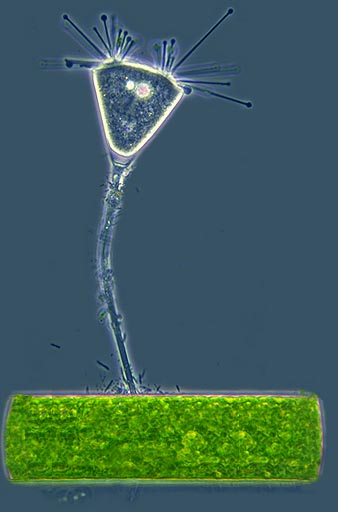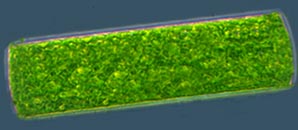 Ciliates in disguise pictured by Wim van Egmond |
 |
||
| Standing motionless on a filamentous algae this Suctori of the genus Acineta is not an innocent creature. It has an enormous appetite. It feeds on it's relatives, ciliates like Paramecium. Suctoria don't look like ciliates but they are. They begin their life as a little ciliated free swimming cell. After some time they attach themselves to a surface and lose their cilia. Then they form the characteristic tentacles. With these they can capture prey much larger than their own size. | |||
|
|||
